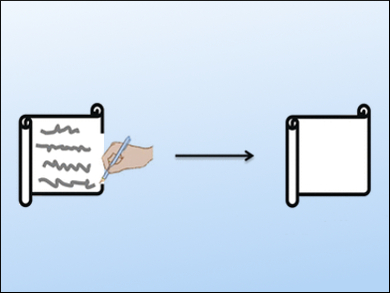Security Ink for Cryptography and against Forgeries
Ciphers and invisible ink – many of us experimented with these when we were children. A team of Chinese scientists has now developed a clever, high-tech version of “invisible ink”. As reported in the journal Angewandte Chemie, the ink is based on carbon nitride quantum dots. Information written with this ink is not visible under ambient or UV light; however, it can be seen with a fluorescence microplate reader. The writing can be further encrypted or decrypted by quenching or recovering the fluorescence with different reagents.
Fluorescing security inks are primarily used to ensure the authenticity of products or documents, such as certificates, stock certificates, transport documents, currency notes, or identity cards. Counterfeits may cost affected companies lost profits, and the poor quality of the false products may damage their reputations. In the case of sensitive products like pharmaceuticals and parts for airplanes and cars, human lives and health may be endangered. Counterfeiters have discovered how to imitate UV tags but it is significantly harder to copy security inks that are invisible under UV light.
Carbon Nitride Quantum Dots
Researchers working with Xinchen Wang and Liangqia Guo at Fuzhou University, China, have introduced an inexpensive “invisible” ink that increases the security of encoded data while also making it possible to encrypt and decrypt secure information. The new ink is based on water-soluble quantum dots, nanoscopic “heaps” of a semiconducting material.
Quantum dots have special optoelectronic properties that can be controlled by changing the size of the dots. The scientists used quantum dots made from graphitic carbon nitride. This material consists of ring systems made of carbon and nitrogen atoms linked into two-dimensional molecular layers. The structure is similar to that of graphite (or graphene), one of the forms of pure carbon, but also has semiconductor properties.
Information written with this new ink is invisible under ambient and UV light because it is almost transparent in the visible light range and emits fluorescence with a peak in the UV range. The writing only becomes visible under a microplate reader like those used in biological fluorescence tests. In addition, the writing can be further encrypted and decrypted: treatment with oxalic acid renders it invisible to the microplate reader. Treatment with sodium bicarbonate reverses this process, making the writing visible to the reader once more.
- Invisible Security Ink Based on Water-Soluble Graphitic Carbon Nitride Quantum Dots,
Zhiping Song, Tianran Lin, Lihua Lin, Sen Lin, Fengfu Fu, Xinchen Wang, Liangqia Guo,
Angew. Chem. Int. Ed. 2016.
DOI: 10.1002/anie.201510945




